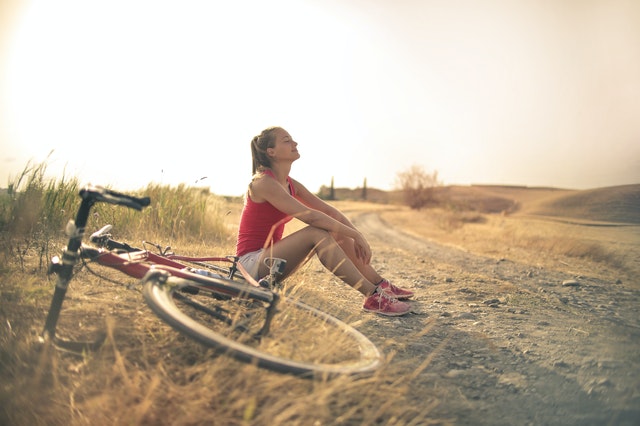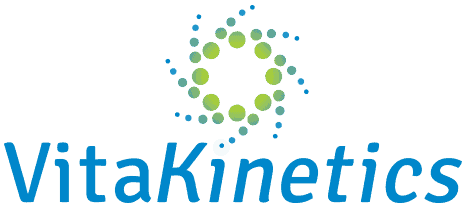Radically Resilient Health Podcast
Injury and Workout Recovery
With Special Guest Paige Galeoto
We are all recovering all the time. It is a natural part of growth and living. Some recovery can be harder than others and in this episode, we discussed how to give your body the gift of an easier recovery through whole health and supplementation. We have invited Paige Galeoto on this episode to share her experience as a competitive cyclist and a mother dealing with her child’s sports injury. Paige explains how she took a skeptical but hopeful consumer and got amazing results.
Connie Wray: (00:00)
Welcome back to radically resilient health. I am your host Connie Wray, and in today’s podcast, Dr. Carolyn Dolan over our last several podcasts has really talked about her research and development about VitaKinetics, her own personal experience with VitaKinetics for both herself and her family. And she has mentioned quite a bit about her clients that are currently taking Vita kinetics. And that is why we thought we would have a guest today. And we’re very excited to have Paige with us today. And Carolyn, I’m going to kind of let you introduce a page to us and tell us how the two of you first started meeting and how your relationship began.
Dr. Carolyn Dolan: (00:38)
I am excited for today to be interviewing Paige. Paige has been a critical member of our development team when we were initially launching by the kinetics and helping us come up with our logo and our website. And we actually met through my husband. She both started out as a business partner to developing the marketing strategy and then as time went on, as she learned more about our product became a consumer. And I really valued her experience both as an active woman who is an avid cyclist. And we’ll hear more about her story later, but also how as a mother, she found value in not everybody kinetics, but by the commit, Stanford stands for the core principles of eat well, move well, sleep well, connect well and supplement well, and how those played a role for her, both helping her son recover. And really I’m going to share her story because I think so many we’d had a few other clients who have used our product for their older kids. But also personally I think her, her story is so important. So welcome page. And thank you so much for joining us.
Paige Galeoto: (01:53)
I am happy to talk about my experience with VitaKinetics. I think it’s been a great part of my own personal health journey and I was really glad to have access to it when I needed it. As you mentioned, I have a son teenager high school or super interactive year-round athlete, and honestly we’ve struggled with injury with him thoughout his life. I mean, he’s had back injuries and kind of always aches and pains, but you know, kind of some more serious injuries that, you know, have really kind of frustrated us, trying to keep him healthy. But what we ran into last year, his team is having some ankle pain. He’s an, he’s a track athlete, track season was kinda starting to get going. And we thought he’d just had a bad sprain and kind of, okay, take a few weeks off, let’s tape it up and let’s get back at it. Um, and we were just starting to kind of get back at it when, you know, COVID pandemic, All the sports were shut down and we’re no longer training for competition like everyone else. Oh, I thought, Oh, this is going to be a few weeks of lockdown and then we’ll get back to it. So we’re like, okay, just take this time off. Right. Just rest. And we’ll be good for your body. So we did that. We had a lot of time off and he was just feeling like his ankle. Wasn’t feeling great. He’s not a complainer, but he’s like, you know, it’s just, just doesn’t feel that great if I run on it, it just doesn’t feel good. So I’m like, okay, it’s time to go see someone. It really wasn’t until I think may we finally went and saw an orthopedist to get an evaluation and they did x-rays. Things that based on how many She’s been resting and not using it, he shouldn’t have this kind of pain. I’m a concern that, you know, the doctor was concerned. We did an MRI and that’s when we learned, um, my son had, They were living in his left ankle. He basically had bilateral magnet terrors, so on each side of his ankle, and it required a formal reconstruction to make his ankle functional again. Yeah. And you know, that the surgeon wasn’t really quite sure how he was walking, which made me feel like a pretty terrible mother, but so that’s where we were, last summer facing surgery and I just wanted, obviously I trusted the surgeon. I knew it was going to do a great job in the repair, but I really wanted to do whatever I could to help my son recover well from that surgery. And certainly from my time working with the Vita kinetics brand, I understood it Origins. I understood that it was developed because you saw the need for this opiod alternative. Certainly we’ve all been exposed just through the media through, understanding that is really a profound problem in this country understanding that Really a profound opioid problem in this country, particularly with young People. So Roy was going into this very intense surgery, knowing that recovery was going to be, you know, he’s not gonna, And to get up and run around after this one, it’s going to take some while I was just terrified about the idea of putting my son on opioids. I mean, how many, how many day lines have we seen where the, You know, the child that the team that ended up dying or ended up getting addicted and having their life spiral started with a sports injury and they were given a prescription for opioid to deal with it Pain. So, I mean, I know my son’s a great kid. I don’t think he, I don’t think he’s using any drugs or anything like that, but I was just terrified about the potential because it’s happened so often. So, I was really Either to use biokinetics to really help manage that recovery Manage is inflammation is pain, so that we can really minimize how much, um, of those prescription pain relievers we needed to use. Um, one of the Things I like to bring up, cause I noticed we’re talking About a hot button of the opioid crisis. and it’s not that they don’t have a role, particularly in that early pain management. It’s the chronicity of the use and that getting past that three to five days, particularly in a naive patient. And what I mean by naive is somebody who hasn’t taken those intense, um, type of drugs before that the risk for eviction gets much higher, the longer you’re on it. But that as a mother we’re goal is not to like force your child or yourself, or a loved one or anyone into like unneeded suffering. and so tell us a little bit about those early stages. Um, my understanding was that he did use it for the series of a few days as needed in those immediately after. And that you just sort of worked towards that transition. Tell us a little bit more about that process.
Dr. Carolun Dolan (06:46)
I’m going to glad you brought up the nuance of there is a role for opioids, any the following recovery? I can’t say I fully understood or embraced that nuance. my doctor gave us a very strict or he gave us a schedule Said, follow this. This is really important. You need to stay on top of the pain. So many people would use both words of me. You got to stay on top of the pain, but I was kind of trapped in this mental space of any opioid use is terrible. So, you know, the, he had a nerve block. So for the first 30 hours, he felt nothing. And I’m like, Oh, doing great. You know, he’s doing great, got Tylenol in him, he’s doing grease sleeping. and I’m like, when it starts hurting, then we’ll address it. And I waited I got him on the Vita kinetics right away. Okay. I got him on the aspirin and blood center right away, but I just waited with the opioids and I really, really, really regretted it. Uh, ahead of the pain. So when that nerve block wore off and A day and a half later That morning, and he, I mean, he Was beyond miserable. He was riding in pain. And as the doctor There’s telling you, it’s really hard to manage the pain. And at that point you’ve given the opioid, but it takes a while to get into their system. It takes Hours and hours and hours. And I, and I felt like I had tortured him by not preparing him well. So once we finally got on top of it, he did it, Oh, he did use the old or good regime for about Three days. And then, you know, we started cutting back, started cutting back. And then within five days he was completely off them. But honestly, I really regretted not helping me Manage that initial pain and inflammation post-surgery cause he really suffered more than he had To but again, After those first couple of days with that acute pain, starts mitigating, you know, I kind of let him be my guide. I mean, after I saw how much pain he had done it. You know, we would, for a few days, Again, we stayed right on top of it, doing it exactly on the schedule. And then I was like, okay, let’s stretch that a few hours. You know, tell me how’s it feeling? How’s it feeling? How’s it feeling? And he really, I mean, we were on Tylenol and Vita kinetics within five days. So, that was what he used for the rest of his recovery. Did you, uh, give your son Vita kinetics prior to the surgery? Had he been already taking the supplement before, or was that really his first introduction to Vita kinetics after the surgery? So Prior, like in the years prior, since I had been on it, I had given him when he had sort of acute soreness when he had some injury, he would kind of use it acute, acute acutely, you know, for, for a week period or something. I wanted to put them on him before the surgery. Carolyn advised me to talk to my surgeon about it. Some of them don’t want you on anything leading up to the surgery. My surgeon was not familiar with the product and basically Basically said, talk to them. The anesthesiologist, I talked to the anesthesiologist, I sent him the ingredient label. Like No one was comfortable just coming lighting. And so I wasn’t comfortable just going against doctor’s orders. So he did not get preloaded, but by the kinetics, which I think Would have been valuable, but I deferred to my surgeons. I’m like, well, he’s going to get it the minute He’s done with surgery and we’ll just go from there.
Dr. Carolyn Dolan: (10:22)
And I think you make an important point. When are the most critical pieces to this? You know, the traditional healthcare provider and surgeons are not familiar with those natural from the natural ingredients in their, their effects. And as they’re heading into surgery, most are going to be just clean it up. I mean, you’re not supposed to be taking, um, and said, you know, non-steroidal, anti-inflammatories, I mean, there’s a whole host of things that they prefer not take. And so it’s maybe just simply easier to say don’t take it. Um, which is mostly fine. I do think there’s value with learning preoperative wounds, but more than that is just the communication to let them know that you desire to incorporate it afterwards as well. And then it really is a tool it’s not meant as an entire replacement. because you do get in those acute inflammatory painful States where the opiates do have a role. We just have to be very mindful of how long, how often. So it sounds like when you got them on it, as soon as you could and it, and it gave him something to lean on once you got through those acute phases. Um, and also the other piece to this is over the time and that you understood about the product was rather than being a blocker of pain through the brain. Like the opioids are, or like a nonsteroidal anti-inflammatory, which decreases the inflammation. But the design of this Recipe was really supportive in nature of the healing process,
Dr. Carolyn Dolan: (11:58)
The gut healthy gut brain connection.how do you think that played a role for you in his recovery? Well, again, yeah, you pointed out learning about your product, you know, both on the marketing side of it. And then for my own use, I was really unaware. I’m knowledgeable about the role of inflammation. I mean, you kind of think somebody isn’t playing that’s bad, you’re hurt. So
Paige Galeoto: (12:23)
Understanding that it’s actually a natural process of growing building muscle mass and these things like inflammation in and of itself is a symptom of that develop. It’s not necessarily negative. So the idea that we just Stop inflammation isn’t necessarily productive. So that was new knowledge to me that I gained when I started learning about your product. Yeah. And, you know, learning about the science. So that was really valuable for me to understand that, you know, the smelling, the inflammation that he had, again, As part of his healing process, it was necessary. It’s not like, Oh, we just don’t want it to be swollen. Right. Understanding that I think just help, helped, I guess, help me be less panicking about his recovery for one thing. and just understand that we were supporting what his body needed to do to get that ankle back to a hundred percent. And I was, you know, I was confident he would get back to a hundred percent. I just, you know, wanting to the recovery to be as smooth As possible. So I felt like, you know, and he even asked, he built, you know, His recovery progressed and he went into PT. He stayed on that regime with mighty kinetics throughout his whole recovery process. But so for the three plus months that he was still under the care of an orthopedist or a physical therapist, This and dealing with any kind of discomfort he was on it, um, when he kind of was released and he wasn’t experiencing any discomfort anymore. He’s kind of back to his pre-surgery situation, which is when he has an acute injury. When he has a bunch of muscle soreness from weights, We dose him, you know, he gets doses of Vita kinetics to deal with that acute injury. So he’s just not, he’s not on it every everyday, like I am, but it’s definitely Argue of his muscle health and his body health. How Has he responded to having done that? I mean, as a teenager and taking supplements, and I’m just curious, what was his Response to it Outside of what you notice in his recovery? Honestly, I think he was just It’s just sort of trusting of me as his mother, like, Oh, this is a good thing for me to take. Okay, I’ll take it. And I don’t know that he really embraced the concept, Done it, or, you know, It’s definitely explained to him why it was important for him to take it. And why, you know, even when he’s taking Tylenol And doing these other things, like why this will continue to help him. And I think he just trusted the, the reason that was giving it to him. we don’t, I mean, he’s never takes taken. I mean, I think we need, let’s see. [inaudible] what else the little kids take. I mean, he’s taken like almost nothing throughout his life as far as medications, and he’s not used to having daily pills. We have, you know, we very well in our household, we don’t supplement with vitamins typically or anything. Um, we just count on getting that stuff from our food. We’re outside a lot. So we get the vitamin D so now when we, we’re not a family that regularly supplements as part of our lifestyle. Um, so yeah, I think he just trusted me to, to guide him toward what was going to help with his recovery. He knew I had his best interest at heart. And just a numbing for that.
Connie Wray: (15:42)
You seem to, just in your conversations, you already really embrace a lot of the core principles that Vita kinetics includes the eating well, the sleeping. Well, you mentioned just making sure your son was resting, uh, the supplement that you were adding in there. Had you been, was this part of your lifestyle regimen prior to, and do you consider that you, and were there new things that you included that were part of these core values that you hadn’t addressed before that, or you’re now embracing every day? Or was this already just part of your life
Dr. Carolyn Dolan: (16:15)
Broadly? Yes. and again, that’s, that’s part of it, you know, you know, when you’re buying, when you’re using your product, you’re in a rural way, you’re just taking a sum of ingredients on a label. But I think if you feel that you share a philosophy with the company, that’s making that product, it helps justify your decision. You know, it kind of helps reinforce why you’re doing it. So I would say, yes, we, we were a family that, um, I wouldn’t say we’re hyper, um, strict, but we have always been a very active moving family. I mean, from the time my son was more always sports and outdoor activities eating well is just part of our, always part of our lives. Lots of greens, minimal sugar, whole foods. That’s just, that’s just what we do. And, and I’m, I’m really delighted in how that has really become a part of my son’s just understanding of the role food plays. You know, when he spends time with friends or away from home, sometimes he’ll like walk in the door and go, I need vegetables. Oh my God, we haven’t had vegetables all weekend, you know, staying at a friend’s house. So he’s just aware of the value of good nutrition as well, which I really appreciate. I’m, I’m a big sleeper alum asleep. He has never needed as much sleep as I thought he needed, or I thought he should have, even as a baby, he was never, I mean, he rarely slept more than eight hours. So
Paige Galeoto: (17:52)
I’ve kind of had to adjust his body seems to be sleeping as much as it needs to do. He was never a typical teen, you know, that would sleep all day, but certainly during his recovery, it was okay. All about resting the body, just letting the healing happen.so yes, I do believe he does sleep well, just not as much as I would have thought he did.but again, yeah, the supplementing that was, that was pretty good. I, to him, like I said, we had done it for a little bit for the acute situation. and personally I’ve kind of gone on and off supplements over the years. And there was a time where I was told I needed more vitamin D And there’s a time where I thought I should be taking calcium. And I kind of, Well for these little waves were kind of get on a trend or I think I should be on this or this is Going to help me, but I always end up getting off. But Vita kinetics, I mean, since I’ve worked with Carolyn, I mean, it’s been a couple years now, pretty good Consistently. I have taken that supplement daily one. I don’t feel like it’s pretty anything. The body that my body doesn’t need or is going to harm it. And two, I, I really personally have noticed results for myself. I know it doesn’t work the same for everyone. I’ve tried to convince friends to try it and someone giving it a try. I just don’t see it. And that’s fine. That’s fine. But for me, I feel like it’s really supported just my overall health and my overall Performance. So I’m sticking with it, Speak to your performance a bit because our listeners maybe don’t know what you’re doing now. So I am a, um, an avid cyclist, an avid middle-aged female second, No competitive years ago. Of course there’s some competitions right now, but you know, I really enjoy cycling. I enjoy spending a lot of time cycling And I enjoyed just pushing
Paige Galeoto: (19:44)
Myself to be good at it. Whether I’m going to show up for a race or not, actually, before I got on by the kinetics before I learned about it and started trying it, I’ve really been struggling with recovery and to the point, and I’m just, I just chalked it up to, you know, Oh, I’m getting older. My body needs a longer to recover, you know, so I do her hard workout. And then, you know, on my training schedule, there was another hard work. So two days later, and I’m just not recovered enough to really go at a hundred percent. So you’re kind of, you know, limping through. Totally your workout. Not really able to give it a hundred percent in just kind of chronically. I just felt like I would have a race or a hard effort and I was just tired and my body, my muscle would be so sore For just too long. And again, I just thought, well, wow, this is, this is what it feels like when you’re in your late forties, you know, you just, it’s just hard to do stuff. So I just kinda was open-minded when I tried by the kinetics and, but I would have to say pretty skeptical. I’m like, you know, I was having lot of cramping issues. When I was performing like very serious cramps, That were happening pretty chronically. So I was trying everything under the sun to manage that. And, hot rubs and meditation, And just, just like grabbing at straws, trying to figure it out. How can I get through a race without cramping? So I’m like, I’m going to try that in kinetics, maybe that’ll help. Well, me and buddy connotes did not help with that cramping, but what it Mitigated that pain and discomfort I had after hard efforts. And honestly, I was truly skeptical. I was lifting weights twice a week, very consistently. And the day after the two days after lifting weights and I’m hobbling up and down stairs, I’m just sore, sore, sore, sore. And can’t really ride my bike hard because I’m sore from doing weights, but I’m doing the weights to get started and ride the bike. So it was counterproductive. Um, but in clinically, even though it was lifting twice a week I was still sore. Every time I lifted. So I started taking kinetics again, I was sort of trying to solve the cramping issues, but I wasn’t sore from my life, my weight. So I’m like, well, that’s just a coincidence. You know, there’s no way that I’ve been dealing with this thing for months and months and suddenly I’m not so sure, But I mean, I was skeptical and I really want to understand. I’m like, okay, do it exactly like you, You did it, you know, do a, to try to do your hard work. Oh, I can do my homework out. Okay. You know, do the race, how do you feel on Monday? How are you feeling today? And I consistently, consistently was feeling tired after a race, but wow. I really can get back in the saddle and I can get back to my training so much more efficiently than I could before. And it just, it happens. So Really that, and to this day it happens so consistently, consistently, but I really feel like as skeptical as I want it to be, that it really has helped my body recover better from those hard efforts. Um, I mean, I, you know, lifting heavy, writing hard, you know, whatever I was doing writing long, you know, during the pandemic I had all this time. So I was doing these or bike rides and, uh, Sure. You’re tired at the end of the day. It’s Not, um, it doesn’t give you extra energy, but the next day I could get up and do stuff and I was fine. So I just so valued That kind of ability to push my body and then be able to recover well, Push it again consistently. And that’s why I’ve stuck with
Dr. Carolyn Dolan: (23:26)
You Bring up another interesting point. Cause there’s been a handful of our clients who didn’t have anything as acute feedback like you’re describing. Um, but that in time, and I wonder if some of your other friends who have tried it and haven’t really noticed anything, if they are actually pushing themselves to that acute pain response, they don’t necessarily have that feedback. But a lot of our clients notice that three, six months, cause they’ve been working on specific health conditions. So they’re following with natural path doctors or their primary care physicians. And they’ll send me these notes like, Oh my gosh, I’ve been taken by the kinetics now for three months. And all of a sudden now I’m seeing now I’m seeing the, the effects because it’s not, it’s not always rapid fast. Um, sometimes the consistency is the key to give yourself that time and, and what it means for that healing to occur because not everyone’s pushing themselves in this sort of high intensity activity like you are. Um, so hearing that story it’s really awesome. Did you ever end up figuring out the cramping situation?
Paige Galeoto: (24:35)
I can’t say I figured out exactly why it was cramping, but I did have, I did, I did figure out a solution and a friend, who’s a, who’s a trainer, she’s a triathlete and she’s a coach. Um, she just suggested that I wasn’t warming up Well enough and I’m like, we’ll warm up For half an hour. Like, well, what do you want from me? Um, I wasn’t warming up at a high enough intensity. So she gave me a very structured warmup and it was eight minutes long. And so I, um, for about six months before For every race, cause it was typically during racing that was cramping. I would do this very structured, Warm up, which probably wore me out on that for my race, but I didn’t Haven’t cramped sense. So I have to basically have my body into all, All the zones, including the anaerobic zone before my heart effort. And then I don’t cramp.
Dr. Carolyn Dolan: (25:31)
Then the other thing I’m going to add that you are so eloquently describing here is when we talk about those foundational principles who self-evident well is only part of it. And part of what makes that resilient, radical, resilient house piece is that you toggle back and forth and explore different areas. Okay. You tried that connection piece meditation. Okay. That’s not my safe is okay. Um, you know, nutritionally, I’m pretty solid for the supplement. Well, that’s not doing it, but it was something related to your movement and you’re warming up and you just kept, that’s kind of like what I love about your story too, is that it’s not all one or the other and it different phases of your life. One become one part becomes more important than another same for your son. Like normally he doesn’t his genetics make it so that he doesn’t need maybe what we would consider average sleep, but that’s, he’s getting enough rest. But then during that recovery period, you’re like, we’re gonna make sure that when you are resting, you’re getting the best, best that you can. So thank you so much for sharing your story page. I love it.
Paige Galeoto: (26:41)
Welcome. Thank you for making VitaKinetics.
Dr. Carolyn Dolan: (26:44)
And we know your time is valuable. So I don’t want to take up too much more of your time, but uh, cause you have other engagements, but thank you so much. Anything else?
Connie Wray: (26:53)
Oh, this is perfect page. It was so great. I think it was just perfect because you really do hit everything that, uh, Carolyn talks about in regards to sleeping well, supplementing well, even just as you were talking before, we even really mentioned that you were talking about you eat well, you eat a lot of greens. And uh, I think the three of us have something in common is that we’re really instilling those values in our kids. My daughter is the same way. You know, she’s like mom, we haven’t had broccoli. I mean, Roxy, you know, and she’s 10 years old and she loves vegetables and she comes home from school and loves to have her peppers and her cashew dip, you know, that’s her staple. And I think, uh, Carolyn and I, and it sounds like you too, it’s just, that’s always been a key component to our radically resilient health is that we’re also putting things in our body that we know is healthy for us. And you know, we’re also three very busy working women. And I look at that gut brain connection. I think that eating well, supplementing well moving well, sleeping well, it makes me more focused. You know, my brain and my gut are very much connected. I know how I feel if I don’t eat well or I don’t sleep well, it does affect my daily ability in my mind to get things done. And I can absolutely feel that. I think VitaKinetics is just another for me. It’s that added bonus of, okay, I’m doing these things, but this gives me that little bit of a boost. You know, like I was mentioned to you before we started recording, you know, I don’t know how I’d ever get through leg day. That’s no way it’s an important component to healing better. So thank you again for sharing your story. And I just want to add
Dr. Carolyn Dolan: (28:34)
One more thing here. You know, part of the growth of radically radically resilient health radio, um, was to show information where the health is not simply the absence of an injury or disease or illness or stress, but truly using those foundational principles to recover. And with those certain conditions, you know, I think as far as my journey in that health and wellness community, it was like, well, if I just did all these five things perfectly like nothing bad, I’m never going to get sick. Now we’re going to get injured, but that’s right. and there’s five components, um, ebb and flow, you know, Well, your son really probably wasn’t able to sleep well during those acute phases because of the pain he was in. So you feel them improperly with good nutrition. And that’s when you brought in the role of supplements to, to support that. And that’s really what I want to bring that people can get through some really challenging Things and restore this radical resilient health state, even despite, these challenges.

Mena
Radically Resilient Health Podcast Small Steps Conquer Mountains with Special Guest Mena Spodobalski Evoke Fitness owner, Mena Spodobalski, shares her joys and struggles toward radically resilient health. Health doesn't always have to seem radical. The best workout...
Recovery From Substance Dependency With Lori Windfelt
Radically Resilient Health Podcast Recovery From Substance Dependency With Lori Windfelt Radically Resilient Health is not about the absence of disease, injury, or stress, it is the ability to recover and make positive choices to support your overall health. Lori...
Emotional and Mental Resiliency – With Special Guest Dusty Braun
Radically Resilient Health Podcast Emotional and Mental Resiliency With Dr. Dusty Braun Our mind and body are intimately interconnected in ways that we can't really comprehend outside of science. We oftentimes think ourselves or our minds as separate from our body,...
Available at our partner locations

690 West 2nd St. Suite 101
Reno, NV 89503

13981 S Virginia St #402b,
Reno, NV 89511








